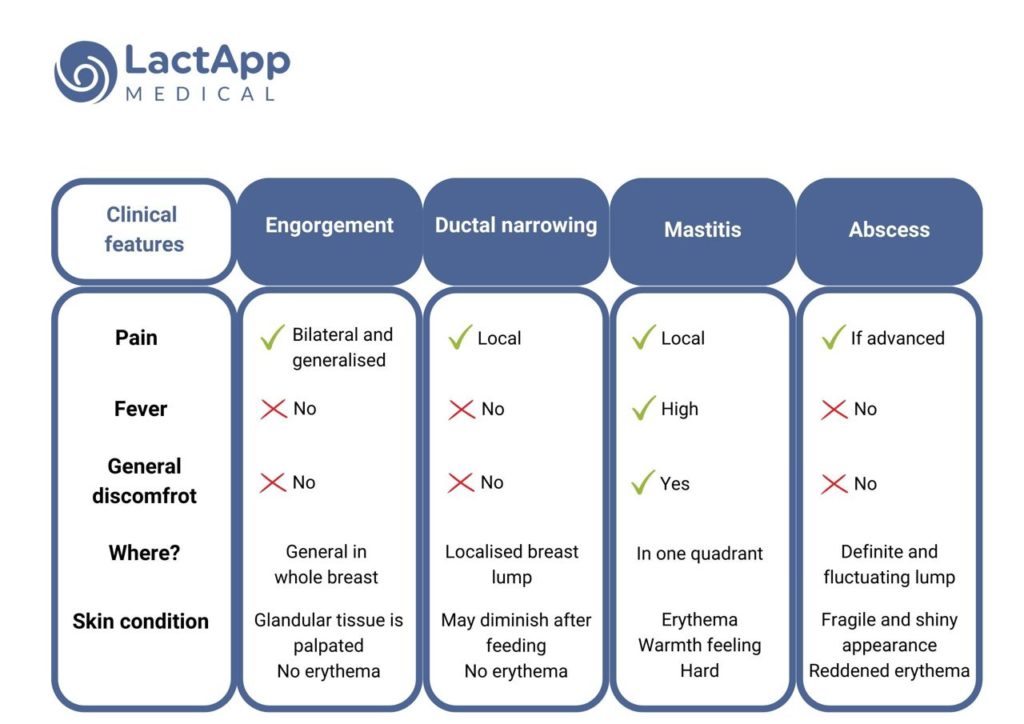
Complications in breastfeeding
Although it is well known that breastfeeding should never be painful, pain continues to be one of the leading causes of weaning among nursing mothers. When complications appear during breastfeeding, such as engorgement, ductal obstructions, acute mastitis, or an abscess, a proper differential diagnosis must be made in order to be able to manage them correctly.
At the end of this article, there is an infographic to support professionals who accompany breastfeeding and its processes. This should help diagnose and guide mothers about their situations to recommend the most appropriate treatments.
These are the most common situations:
- Engorgement: This is usually observed due to a complication in the establishment of lactogenesis II, although it can also appear during the weaning phase or when returning to work. The recommended measures are to apply cold to the area, anti-inflammatory drugs, and the performing the reverse pressure softening technique before feeding at the breast or pumping breastmilk.
- Ductal narrowing/blockage (obstruction): This can occur when the latch is not optimal, and there is no effective drainage breastmilk, when there is a force of pressure on the breast (for example, due to the use of a wired bra), or when there is a possible infection. Applying cold to the area is recommended to promote milk drainage, as well as when feeding at the breast, placing the baby’s chin towards the affected area. Furthermore, a gentle circular massage on the blocked area during the feed should be recommended. If there are no other contraindications and you are able to recommend medication, it may be useful to use an NSAID such as ibuprofen 400 mg every 8-12 hours for 24-48h. The condition should be resolved in less than 72 hours. Otherwise, a new evaluation by a health professional is recommended.
- Acute mastitis usually occurs after the establishment of lactogenesis II, which means that the first days after birth have already passed. Its etiology is usually due to dysbiosis of the breast milk microbiota. Milk removal and drainage, application of cold on the area, anti-inflammatory drugs, and recommending the mother to rest will be the first steps to be taken in its treatment. If it gets worse or there is no improvement within the following 24-48 hours, a reevaluation should be performed, and if necessary, the appropriate antibiotic treatment must be given.
- Breast abscess is a complication of acute mastitis, usually due to ineffective or inadequate antibiotic treatment. The diagnosis is made by assessing local signs such as the presence of fovea and a defined lump in the breast that fluctuates, and the diagnosis is confirmed by an ultrasound scan. Surgical or ultrasound-guided needle drainage and appropriate antibiotics are part of the treatment, in addition to the continuation of direct breastfeeding by latching the baby onto the breast or, in case of difficulties due to scarring, regular milk expression, either by breast pump or by hand. Therefore, if ultrasound-guided needle drainage of the abscess is not possible and surgical drainage is chosen, the incision area of the surgical wound should continue to allow the infant to latch on.
